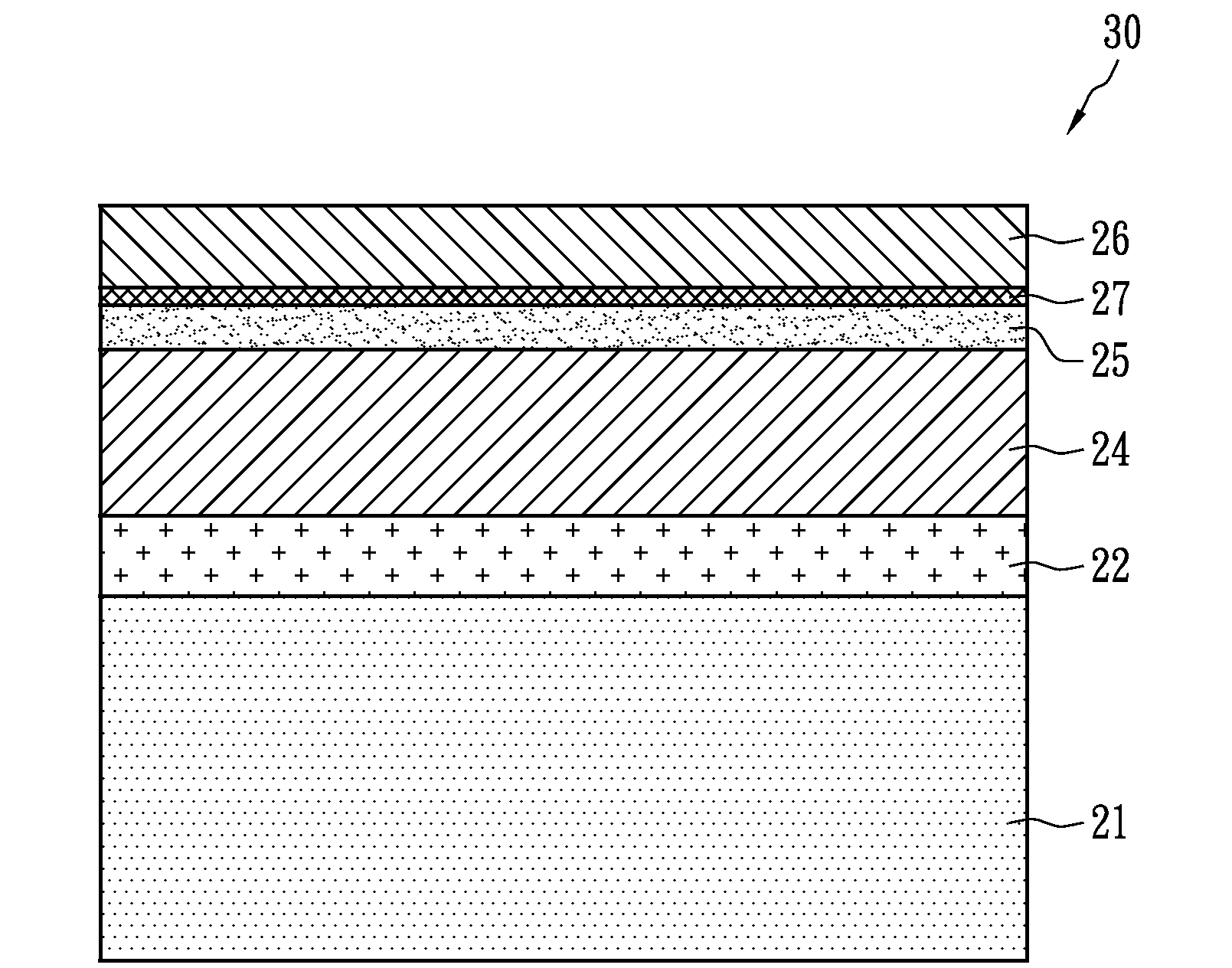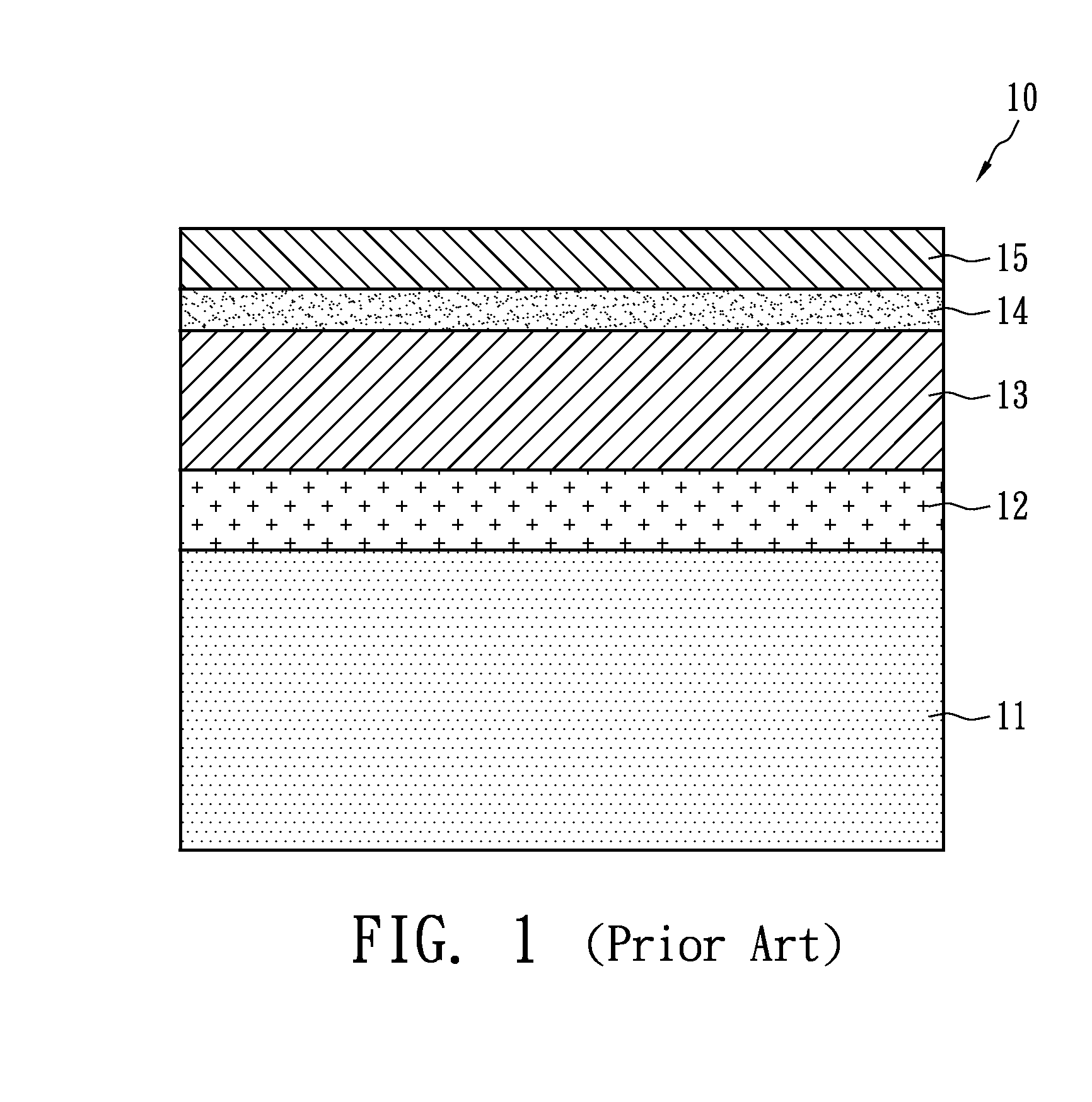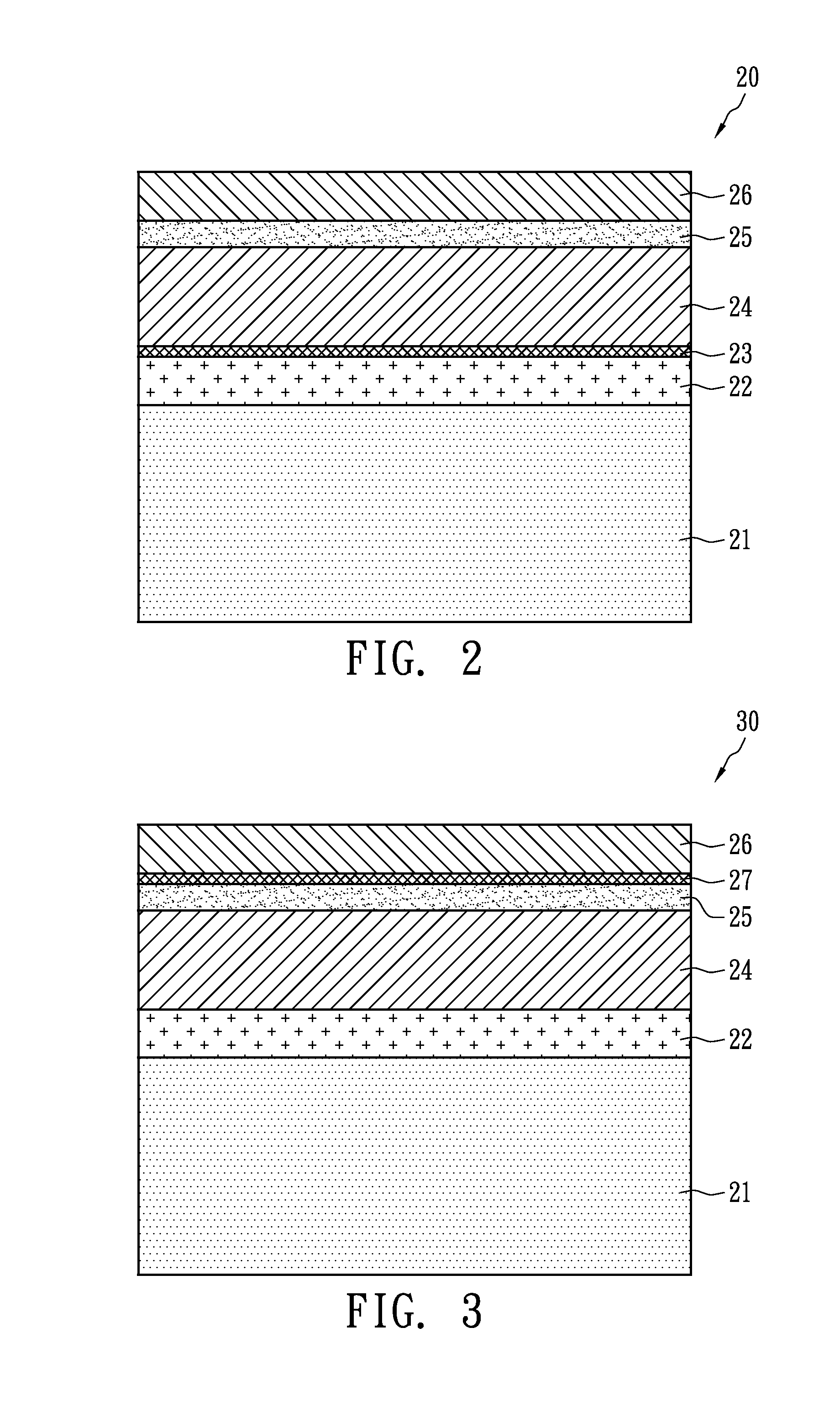Photovoltaic cell structure
a photovoltaic cell and cell structure technology, applied in the direction of sustainable manufacturing/processing, climate sustainability, semiconductor devices, etc., can solve the problems of contaminated environment, human health impacted, and toxic cadmium if eaten, so as to achieve less harmful to the environment
- Summary
- Abstract
- Description
- Claims
- Application Information
AI Technical Summary
Benefits of technology
Problems solved by technology
Method used
Image
Examples
first embodiment
[0016]FIG. 2 shows a photovoltaic cell structure in accordance with the present invention. A photovoltaic cell structure 20 is a laminated structure and includes a substrate 21, a metal layer 22, a high resistivity layer 23, a p-type semiconductor layer 24, an n-type semiconductor layer 25 and a transparent conductive layer 26. In addition to a glass substrate, the substrate 21 may be a polyimide flexible substrate, or a metal plate or a metal foil of stainless steel, molybdenum, copper, titanium or aluminum. The substrate 21 is used for film formation and the shape thereof is not restricted to a plate; others such as a ball or specific or arbitrary shapes can also be used. The metal layer 22 may be a molybdenum, chromium, vanadium or tungsten layer of a thickness between 0.5 and 1 μm formed on the surface of the substrate 21 to create a back contact metal layer of the cell. The high resistivity layer 23 is formed on the metal layer 22 and has a thickness preferably between 25 and 2...
second embodiment
[0019]FIG. 3 shows a photovoltaic cell structure in accordance with the present invention. A photovoltaic cell structure 30 is a laminated structure and includes a substrate 21, a metal layer 22, a p-type semiconductor layer 24, an n-type semiconductor layer 25, a high resistivity layer 27 and a transparent conductive layer 26. In comparison with the photovoltaic cell structure 20 shown in FIG. 2, the position of the high resistivity layer 27 is changed. The high resistivity layer 23 is initially placed between the metal layer 22 and the p-type semiconductor layer 24. Instead, the high resistivity layer 27 is placed between the n-type semiconductor layer 25 and the transparent conductive layer 26. In an embodiment, the high resistivity layer 27 comprises zinc oxide, which is also insulative for prevention of electrical shorts of devices. Likewise, the n-type semiconductor layer 25 can be made of photo catalyst material such as titanium oxide or tungsten oxide.
[0020]In an embodiment,...
PUM
| Property | Measurement | Unit |
|---|---|---|
| thickness | aaaaa | aaaaa |
| thickness | aaaaa | aaaaa |
| thickness | aaaaa | aaaaa |
Abstract
Description
Claims
Application Information
 Login to View More
Login to View More - R&D
- Intellectual Property
- Life Sciences
- Materials
- Tech Scout
- Unparalleled Data Quality
- Higher Quality Content
- 60% Fewer Hallucinations
Browse by: Latest US Patents, China's latest patents, Technical Efficacy Thesaurus, Application Domain, Technology Topic, Popular Technical Reports.
© 2025 PatSnap. All rights reserved.Legal|Privacy policy|Modern Slavery Act Transparency Statement|Sitemap|About US| Contact US: help@patsnap.com



